A medicinal herb garden is easy to grow using plants that are suited to your growing conditions and plant hardiness zone. But choosing the right plants for your growing conditions is the key to creating a successful medicinal herb garden that is easy to maintain without undue toil. After all who wants to work when they can play in the dirt.

Characteristics of an easy maintenance medicinal herb garden
- The medicinal herbs grown are suited to your USDA plant hardiness zone
- It is organic
- Soil microbes are encouraged with the use of biochar and mulch
- It is sustainable to use compost and plant waste to add back nutrients to the soil
- It utilizes the abundance of the herb garden to provide nutrients to other plants
- It has a consistent supply of nectar and pollen throughout the season for native pollinators and honeybees
- The plants are predominantly perennial medicinal herbs
- It takes advantage of companion planting
- Native medicinal plants are used where it makes sense to preserve wild populations from harvest
- It has areas of shade, part shade and full sun with appropriate plants in each
- Water is used sparingly making use of drip irrigation when appropriate
- Herbs are situated based on the needs of the plant for light and water
- Mulch is used judiciously to inhibit weeds and mimic the natural growing conditions of herbs in their native soils
- It has clearly defined traffic paths to protect the garden from impaction
- There is a bench for the gardener to sit and rest and enjoy the garden
- Frequently used garden tools are close at hand in a garden shed, protected from elements
- The garden uses raised beds as appropriate to ease the strain on the gardener, allow for frost drainage,
Full sun – part sun – part shade – shade
What do these terms mean?
- Full sun means at least 6 hours a day of sunlight a day, but some fruits and vegetables need 8 to 10 hours.
- “Part sun” or “part shade” are often used interchangeably and denote 3 to 6 hours of direct sunlight.
- “Shade” means indirect sunlight or filtered sun.
Light can be increased with the addition of reflective mulch or mirrors placed strategically around plants in low light areas, but this doesn’t replace direct sunlight. If a plant needs full sun to thrive planting it in a pot on a north-facing balcony is going to require supplemental lighting. Make sure to take into account the light needs of your herbs. Herbs you harvest for leaves usually can use less sun than those you need to harvest flowers from, for example.
Starting Seeds:
While many herbs can be purchased as plant starts, native plants and unique varieties of herbs may need to be started from seed. Sow herb seeds about 8 weeks before your last frost date, in seed starting mix. Make sure to cold stratify seeds that need it, lavender and rosemary are two that do. A damp paper towel in the fridge for 6 weeks, or the seed packet in the fridge or freezer for the same duration of time can work and improve germination.
Watering needs of medicinal herb garden plants
Different herbs like different growing conditions as we’ve seen in the discussion about the sunlight needs of plants. But the same is true for water. While few herbs can handle sitting in standing water for weeks on end, some medicinal herbs, like mint, enjoy a good soaking regularly.
However, the herbs that originated around the Mediterranean prefer less water. You don’t want to plant them right next to mint. They like their soil to dry out between waterings. In nature, they grow in rocky soil, with little fertility so mimicking their native environment will help these heat-lovers thrive. If you’ve struggled to get rosemary or lavender to thrive in your garden this could be the reason.
If you live where the humidity is high and the rain is reliable, plant rosemary, lavender, thyme, oregano, and other Mediterranean herbs in rocky areas, with good drainage and without supplemental water or water sparingly. But plant mint in the path of the garden sprinkler so it gets regular showers to thrive.
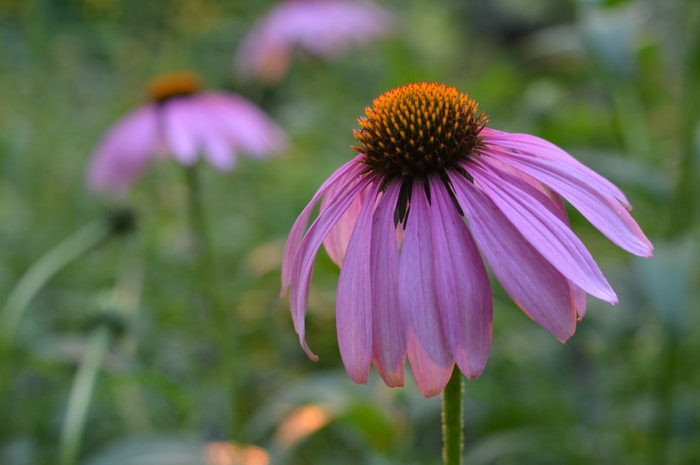
Warm soils
Those Mediterranean herbs also thrive with a little warmth in the medicinal herb garden. If you live in the Mountains, even if your USDA hardiness zone is in the range that Rosemary, lavender, and oregano will thrive, these plants may not have the soil warmth necessary to thrive. In the mountains, the ground temperatures may not warm up completely, even in the depth of summer, if nighttime temperatures are below 50F.
Sometimes planting these warm-loving herbs near a rock wall or placing other heat-sinks near the plants can compensate for the lack of soil warmth, but if you are looking for an easy to maintain herb garden you’ll need to take this into account when choosing your herbs.
Meditteranean herbs can do well in the top quadrant of a stone herb spiral. This is both because it is well-draining, and because the stones of the spiral help retain heat. Rosemary will still need some winter protection, as snow pack won’t necessarily insulate the top of an herb spiral. I like keeping rosemary in a large pot that I can let get a touch of cold, but can bring indoors and keep somewhat cool for it’s dormant season.
On the other hand, if you live in the desert with soil temperatures that radiate heat all night, you might do well to avoid those medicinal herbs that thrive in cooler regions with lots of water. A huge part of planning an easy care medicinal herb garden is choosing the right plants for your growing conditions. You can stretch the season by adding supplemental lighting or heat-sinks into the hardscape, and using soaker hoses to conserve water, but if you need heroics to keep a plant alive that isn’t easy maintenance.
Keeping the herbs that thrive for you is part of keeping your herb garden low maintenance. And if you’re afraid of a thriving herb escaping, remember that mint and mint-family plants make great chop and drop mulches. Comfrey is a great compost booster and another good chop and drop candidate. Don’t be afraid to use your herbs and herb garden for ALL their uses, garden, beauty, permaculture, compost, as well as herbal remedies, flavor, and taste.
Mulch
Mulch serves several purposes in the garden. It mimics nature by adding organic material to the soil surface to break down and increase soil microbes and improve soil texture. Mulch also inhibits weed growth. It mediates the surface temperature of the soil. It can keep roots cool and overcome the tendency to premature flowering in hot, dry weather. It holds in moisture so that water is trapped in the soil and doesn’t evaporate easily.
In early spring as soils are warming up to prepare for lush spring growth, mulch should be pulled back from heat-loving medicinal herbs and other garden plants, to allow the darker soil to warm up with the spring sunshine. When the summer heat becomes intense mulch can be refreshed to hold in moisture in the drier summer days.
Garden mulch reduces garden maintenance. There are many different types of mulch from alfalfa hay, to dry straw, wood chips, or even rocks. The mulch you choose should be based on the natural growing conditions of the plants you choose to grow in your medicinal herb garden. And believe it or not, Mediterranean herbs thrive in rocky soil and so do very well when mulched with fine gravel, which acts as a heat sink.
Plants can form living mulches, or be used for chop and drop green mulches too. Especially fast growing and aggressive herbs. These can make awesome mulch candidates, even if you use soil barriers and containers, the more they are trimmed the more they’ll branch and grow.
A word of caution though, with glyphosate resistant alfalfa and grass hay available for livestock fodder, speak to the farm you buy your hay from before you use it as mulch. Get the assurance that no herbicides have been sprayed in the hayfield. Herbicide residues can damage your garden soils irreparably causing crop failure and destroying soil micro-organisms. The same wisdom applies to grass clippings and other large scale mulch you plan to use in your garden. Always look for untreated or organic mulch for your garden and compost. You may chose to use mushrooms to help clean your garden compost, mushrooms like wine cap can help break down compounds in mulch and compost piles to help protect your plants. They’re also awesome garden mushrooms, and distinctive, so you can harvest them for food too.
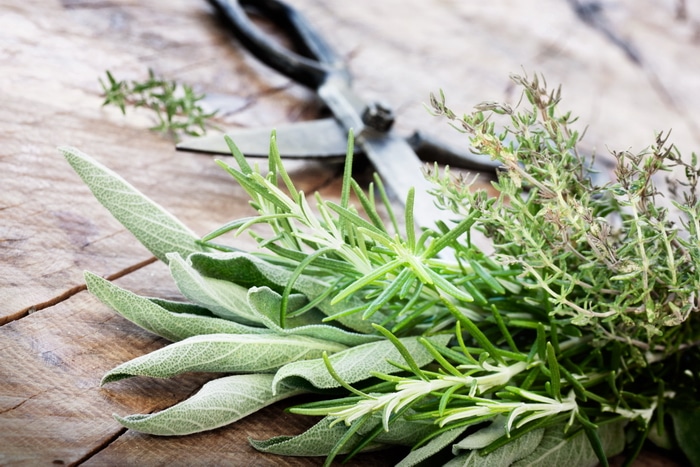
Mediterranean Herbs
Herbs that love full sun and drier soils include:
- Anise
- Anise Hyssop
- Basil
- Holy Basil (Tulsi)
- Bay
- Caraway
- Chamomile
- Coriander/Cilantro
- Cumin
- Dittany of Crete
- Fennel
- Horehound, white
- Lavender
- Lemon Balm
- Marjoram
- Olive
- Oregano
- Rosemary
- Rue, Common
- Saffron
- Sage
- Salad Burnet
- Santolina
- Savory, Winter
- Tarragon
- Thyme
While many of these warmth loving herbs can be difficult to grow, many others are quite easy or can be grown in containers or indoors. Basil, thyme, and sage are all good candidates for indoor or container growing. My sage plant has thrived for three years in a corner of my garden, so even though I’m not ideal for it, this specific plant is doing quite well. Sometimes you get a hardier plant, even with warmth loving ones. Lavender, however, even though I love it, does not love me and is very difficult for me to grow or start.
If you’re wanting showy blooms as part of your garden, look into different herb varieties. Some, like cardinal basil, have very showy, bloom like, tops and can work in decorative plantings. Bronze fennel is another variety that can be very showy, but still good for herbal uses.
Herbs that do well in containers
If you have a short growing season, container herbs can be your best friend. If keeping a plant alive for three or four months of winter is a challenge, micro-herbs can be a way to get around that and still enjoy fresh, powerful herb flavors all winter. And micro herbs still have all the herbal benefits too.
Additional Annual Herbs:
Many of our herbal allies are annual plants that can be used in a myriad of ways, both herbally and within the garden’s eco-system too.
- Calendula
- Chamomile
- Dill
- Garlic
- Onions
- Parsley
There are also tropical herbs that can sometimes be grown successfully in containers, as annuals. These two herbs are helpful against inflammation, and are useful as spices as well.
- Ginger
- Turmeric
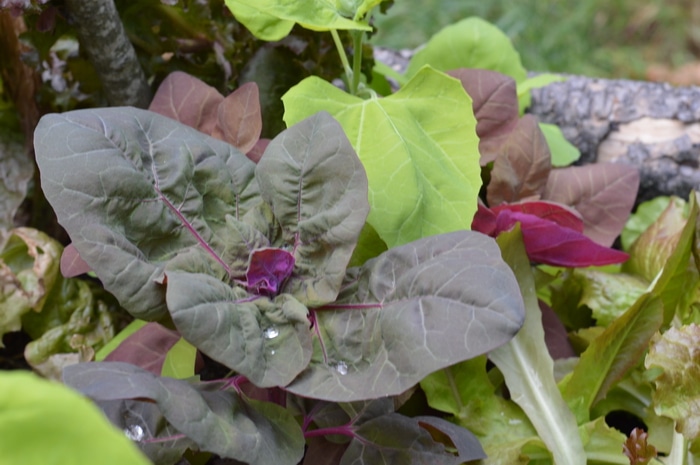
Easy perennial herbs for the medicinal herb garden
These herbs thrive in cooler climates with partial sun to full sun. All are hardy to zone 4 and zone 3 with reliable snow cover. These are easy to grow herbs for your medicinal herb garden or to tuck into a corner of your perennial bed. You might even consider reserving an area of your vegetable garden for perennial vegetables.
- Anise Hyssop
- Bee Balm (Bergamot or Monarda)
- Black Eyed Susan
- Bloody Dock
- Catmint
- Catnip
- Chickweed
- Chives
- Comfrey
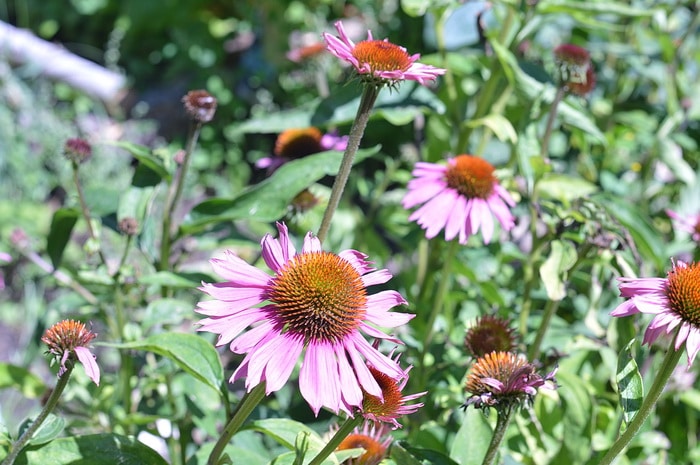
- Echinacea, echinacea purpurea sometimes known as coneflower
- Garden Sage
- Garlic chives
- Hawthorn
- Hops
- Horehound
- Hyssop
- Lemon Balm (Melissa officinalis, a mint family plant and great for bees)
- Lovage
- Marshmallow
- Meadowsweet
- Mints, chocolate mint, spearmint, peppermint
- Motherwort
- Orach
- Pansy
- Plantain
- Profusion® Oregano
- Sheep Sorrel
- Stinging Nettles
- Sweet Cicely
- Valerian
- Violet
- Yarrow
- Yellow Dock
As you are planning your medicinal herb garden remember to choose herbs that you enjoy using for herbal tea, cooking, natural dyes, skincare, tinctures, or making herbal medicine out of. Just because an herb is a perfect herb for your growing conditions doesn’t mean you should plant it. Pick the herbs that you love to look at, smell, and use first. If you love an herb you will pay attention to its growth and it will become a long term herbal ally.
Interestingly, often times the energetics of an herb will match it’s preferred soil conditions. Herbs that like moist soil, like mint and marshmallow, are both cooling and moistening herbs in their energetics.
The eyes of the gardener make the garden grow best.
Using and Preserving Your Herbs:
Your medicinal herb garden should be a place of calm for you. Aroma’s of the herbs, floating in the summer air, can sooth headaches and help ground oneself in the garden. The herbs, in their natural growth are plentiful, and a few leaves here and there to help sore throats, make syrup, or prepare a salve are easy to harvest and grab.
Many, if not most, leafy herbs can be preserved simply by bundling the stems of the plant and hanging in a warm, shaded space to dry. Make sure drying herbs have plenty of airflow and no direct sunlight. Once the plant material is crumbly, you can strip the plant stems easily and bag or jar the leafy material for later use.
When making infused oils for salves, plant materials should be semi dry, or fully dried to prevent contamination or mold. A hot infusion, however, can bypass some of that and is safe to do with fresh plant material. However, I only use hot or warm infused oils for small batch salve making if I’m using fresh herbs. It’s good for making a quick salve for an acute need. I will use warm infusion with dried plant materials for larger salve batches, or for anything I intend to gift.
Tinctures are another good way to preserve your herbal goodness, and you can get quite creative. St. John’s Wort is one of my most frequent ones to make, for personal use. I also make chocolate mint tincture, for gifts and flavor. Use wilted plant material and a high concentration alcohol to make. I use the folk method, where I fill the jar with the herb and then add the alcohol to cover, since I’m only making tincture for personal use.
Get to know your herbal allies by studying one herb at a time


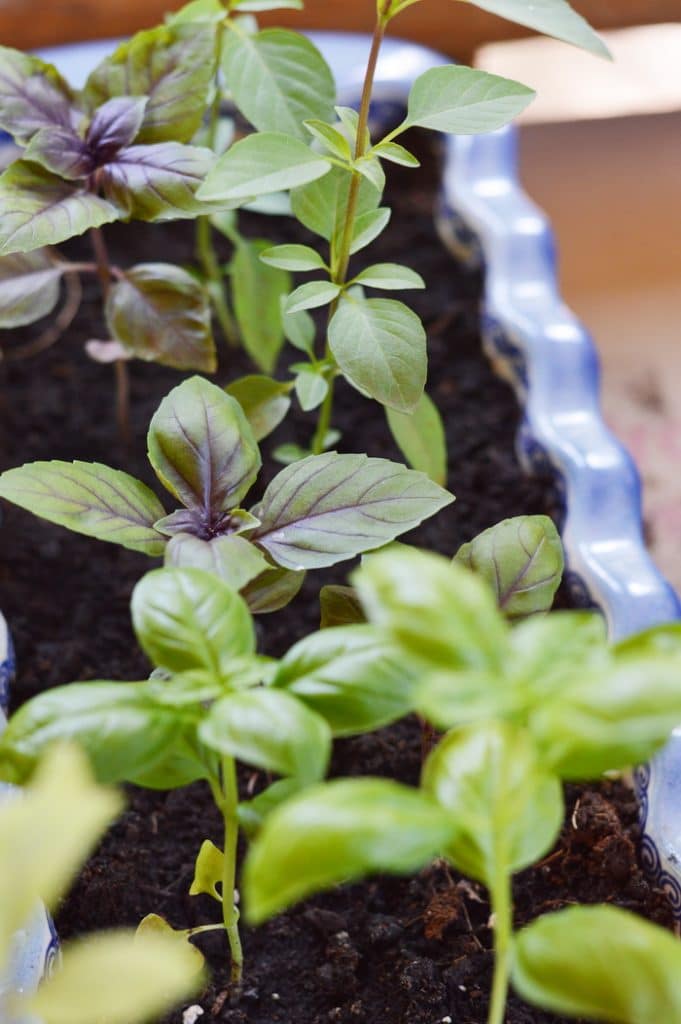
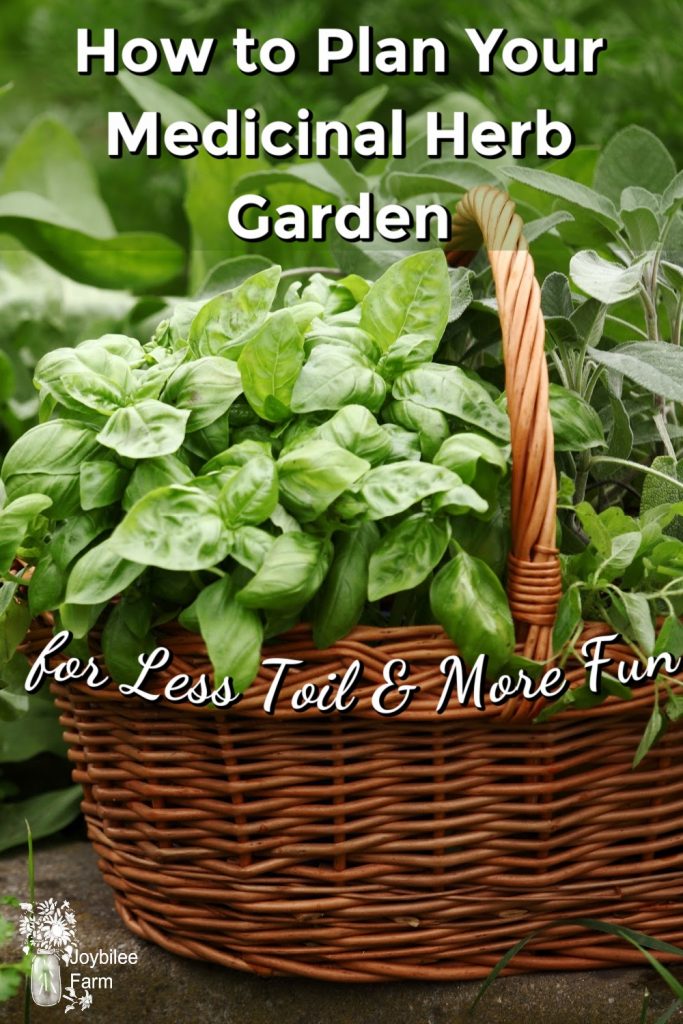


great information on how to grow different hers at home.
You’ll need other foods besides herbs to raise your protein levels. Eggs are one of the best sources of protein especially if you raise your own chickens and can let them eat the bugs and herbs in your garden. If you are vegan you’ll need vegetable sources of protein which are not as easily assimilated by the body. Speak to your health professional for tailored advice.